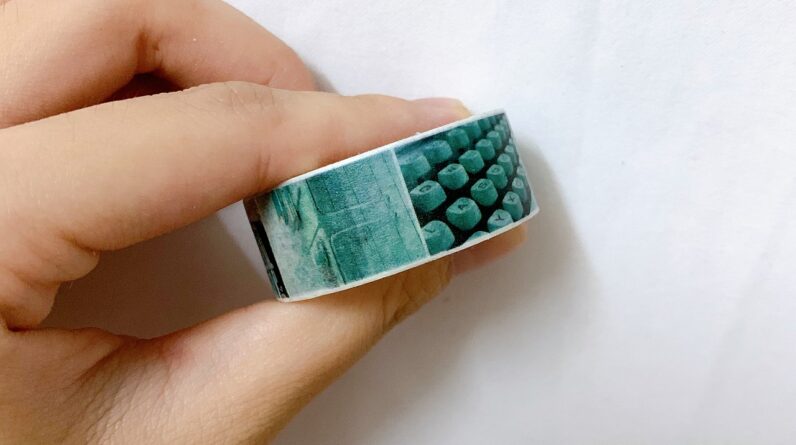
Welcome to “Crafting with Kids: Fun Projects for All Ages”! In this delightful guide, we’ll explore a variety of creative activities that are perfect for sparking joy and imagination in children of all ages. As we embark on this fun-filled journey together, we’ll share our favorite crafting ideas that are easy to follow, engaging, and designed to bring families closer. From colorful paper crafts to exciting DIY projects, we’ve got something for everyone to enjoy. Let’s dive in and start creating memories that will last a lifetime!
Have you ever wondered how to bring out the creative spark in our kids while spending quality time together as a family? Crafting with our children not only fosters creativity but also strengthens bonds and nurtures emotional development. With a sprinkle of imagination and a dash of materials, we can transform ordinary afternoons into extraordinary memories. Let’s delve into some fantastic projects designed to engage kids of all age groups and make crafting a delightful activity for everyone involved.
The Importance of Crafting with Kids
Crafting isn’t just about creating pretty things; it plays a crucial role in a child’s development. From enhancing motor skills to boosting confidence, the benefits are countless. When we craft together, we share experiences that become cherished memories. Plus, it’s a fantastic way to introduce kids to new skills and knowledge.
Benefits for Various Age Groups
Understanding the developmental benefits of crafting for different age groups helps us tailor activities to better suit our children’s needs.
Toddlers (Ages 1-3)
For toddlers, crafting is primarily about sensory exploration. Simple, hands-on activities can enhance their fine motor skills and hand-eye coordination.
Examples:
- Finger painting.
- Simple collage with safe objects like cotton balls or leaves.
Preschoolers (Ages 4-5)
Preschoolers enjoy more structured activities. Crafting at this age can increase their ability to follow instructions and develop focus.
Examples:
- Basic paper crafts.
- Creating shapes with playdough.
School-Aged Children (Ages 6-10)
School-aged kids are better at handling tools like scissors and glue. They can also follow complex instructions and are more likely to explore creative problem-solving.
Examples:
- Building models.
- DIY science projects.
Tweens and Teens (Ages 11+)
Older kids can manage more complex projects that require intricate skills. Crafting can be a way for them to express their individuality and creativity.
Examples:
- Sewing.
- Advanced painting or drawing projects.
Crafting Ideas for All Ages
Creating projects that cater to different age groups can ensure everyone enjoys the activity. Here are tailored crafting ideas, from simple to advanced, for a fun-filled experience.
Toddlers
Finger Painting Fun
Finger painting is all about texture and colors, making it perfect for toddlers. All we need is some non-toxic paint and paper.
Materials:
- Non-toxic finger paints
- Large sheets of paper
Steps:
- Spread out a large piece of paper.
- Pour various colors of finger paint into small containers.
- Show your toddler how to dip their fingers into the paint and create patterns on the paper.
This activity allows for an absolute free-form of creativity and sensory pleasure.
Preschoolers
Paper Plate Animals
Making paper plate animals is a fantastic activity for preschoolers. This project helps them with cutting, gluing, and understanding shapes.
Materials:
- Paper plates
- Construction paper
- Glue sticks
- Child-safe scissors
- Crayons or markers
Steps:
- Pick an animal to create.
- Cut out shapes from the construction paper for the animal’s ears, eyes, nose, and mouth.
- Glue the shapes onto the paper plate to create the animal’s face.
- Use crayons or markers to add details.
With this simple project, they can create a zoo full of animals and learn about different creatures.
School-Aged Children
DIY Lava Lamps
DIY lava lamps are a hit among school-aged children, combining crafting with a bit of science.
Materials:
- A clear plastic bottle
- Vegetable oil
- Water
- Food coloring
- Alka-Seltzer tablets
Steps:
- Fill the bottle 3/4 with vegetable oil.
- Fill the remainder with water, leaving some space at the top.
- Add a few drops of food coloring.
- Break an Alka-Seltzer tablet into smaller pieces and drop them into the bottle one at a time to watch the reaction.
This project is not only fun but also educational, showing the interactions between oil, water, and carbon dioxide.
Tweens and Teens
Hand-Sewn Pillow Covers
Hand-sewing projects can be both practical and fulfilling for tweens and teens. Creating pillow covers is a moderate-level project that lets them personalize their space.
Materials:
- Fabric of choice
- Needle and thread
- Scissors
- Pillow stuffing or an old pillow
Steps:
- Cut two identical pieces of fabric to the size of the pillow.
- Place the fabric pieces together with the right sides facing each other.
- Sew around the edges, leaving one side open for the stuffing.
- Turn the fabric right side out and stuff the pillow.
- Sew the open side closed by hand.
This project teaches basic sewing skills and provides a finished product students can proudly display.

Craft Kits: Worth the Investment?
With so many ready-made craft kits available, we might wonder if this is a good investment. Craft kits can be a fantastic way to introduce new crafting techniques and projects to kids of all ages.
Advantages of Craft Kits
- Convenience: All materials are included, reducing preparation time.
- Learning New Skills: Kits often involve unique crafts that can teach kids new techniques.
- Step-by-Step Instructions: Great for children (and parents) who prefer guided activities.
Disadvantages of Craft Kits
- Cost: Craft kits can be more expensive than DIY projects.
- Limited Creativity: With everything predefined, there’s less room for improvisation.
- Single-Use: Many kits are designed for a one-time activity and don’t leave materials for future projects.
Recommended Craft Kits
If we think craft kits might be a valuable addition to our crafting arsenal, here are a few to consider:
| Age Group | Recommended Kit | Description |
|---|---|---|
| Toddlers | Crayola My First Fingerpaint Kit | Includes washable paints, paper, and tools perfect for little hands. |
| Preschoolers | Alex Discover My Giant Busy Box | Features multiple crafting activities including play dough, foam stickers, and more. |
| School-Aged Kids | Klutz Lego Chain Reactions Science Kit | Combines LEGO construction with scientific exploration for engaging projects. |
| Tweens/Teens | Sew Mini Treats: More Felt Food Fun | Provides everything needed to create adorable mini felt foods with step-by-step guides. |
Tips for Creating a Craft-Friendly Environment
A conducive environment can make all the difference in our crafting sessions. Here are some tips for setting up a craft-friendly space at home:
Designate a Craft Area
Having a dedicated space for crafting helps keep supplies organized and makes it easier to clean up.
- Choose a Table: Pick a table that can withstand messes. Cover it with a plastic tablecloth for protection.
- Storage Solutions: Use bins, baskets, and drawers to keep materials sorted and accessible.
Safety First
Ensuring the crafting area is safe is crucial, especially when working with younger children.
- Non-Toxic Supplies: Always opt for non-toxic paints, glues, and markers.
- Childproofing: Keep sharp objects and small items that can be choking hazards out of reach of young kids.
- Supervision: Always supervise younger children during crafting activities.
Keeping It Clean
Crafting can get messy, but a few preventative measures can make clean-up easier.
- Protective Clothing: Have aprons or old shirts for kids to wear while crafting.
- Use Washable Materials: Select washable paints and markers.
- Clean-Up Routine: Establish a clean-up routine to teach kids responsibility for tidying up after the fun is over.

Encouraging Creativity and Imagination
Encouragement is key to fostering creativity. It’s essential to allow children to express themselves freely during crafting.
Provide Choices
Letting kids choose their projects can ignite their interest and excitement.
- Variety of Supplies: Offer a wide range of materials like paper, fabric, clay, and more.
- Project Ideas: Provide books, online resources, or idea cards for inspiration but leave room for personal interpretation.
Celebrate Efforts
Showcasing and celebrating children’s creations can boost their confidence and motivation.
- Display Artwork: Dedicate a wall or shelf to display their crafts.
- Craft Shows: Organize small family craft shows where kids can present their projects.
Make It a Group Activity
Crafting as a family or with friends can make the experience more fun and collaborative.
- Community Projects: Work on larger projects that require teamwork.
- Crafting Playdates: Invite friends over and set up a crafting station with several activities.
Troubleshooting Common Crafting Challenges
Despite our best efforts, sometimes crafting sessions might face a few hurdles. Here’s how to address common challenges:
Lack of Interest
If a child seems disinterested, it might be because the activity doesn’t match their interests or is too challenging.
- Find Their Passion: Discover what excites them and tailor the craft to those interests. For example, if they love animals, try animal-themed projects.
- Adjust Difficulty: Scale the project up or down to match their ability level.
Mess Management
Mess is an inevitable part of crafting, but it can be managed.
- Contain the Mess: Use trays or large sheets of paper to contain spills and debris.
- Quick Clean-Ups: Keep wet wipes and paper towels handy for quick clean-ups during the project.
Short Attention Spans
Kids, especially younger ones, might have trouble focusing for long periods.
- Break It Down: Divide the project into shorter steps. Allow breaks between steps.
- Keep It Simple: Opt for simpler projects that can be completed quickly.

Crafting as Educational Tools
Crafting is a fantastic way to incorporate educational aspects into fun activities without turning it into a mundane task.
Learning Through Crafting
Each crafting project can be a lesson in disguise.
- Science: Projects like DIY volcanoes or plant terrariums can teach scientific principles.
- Math: Measuring materials or creating geometric patterns can reinforce math skills.
- History & Culture: Craft projects based on historical events or cultural artifacts can enrich knowledge about the world.
Interactive Craft Projects
Some projects are designed to be interactive learning aids.
Alphabet Crafts
Creating crafts based on each letter of the alphabet can aid in early literacy.
Examples:
- A for Airplane: Using paper and simple folding techniques, create paper airplanes.
- B for Butterfly: Cut out butterfly shapes and decorate them with markers or stickers.
Crafting Through the Seasons
Engaging in seasonal crafts can make learning about different times of the year more exciting.
Examples:
- Spring: Planting seeds in decorated pots.
- Summer: Creating sun catchers with colorful tissue paper.
- Fall: Making leaf rubbings or pumpkin decorations.
- Winter: Constructing snowflakes with paper and scissors.
Conclusion
Crafting with kids of all ages offers more than just an outlet for creativity. It provides an opportunity for bonding, learning, and creating cherished memories that last a lifetime. Every crafting session is a chance to explore new ideas, discover passions, and develop important skills. Whether we’re working on simple finger paintings with toddlers or intricate sewing projects with teens, the joy of creating together is immense. So, roll up those sleeves, gather your materials, and let’s get crafting—it’s time to make masterpieces and memories with our children!








